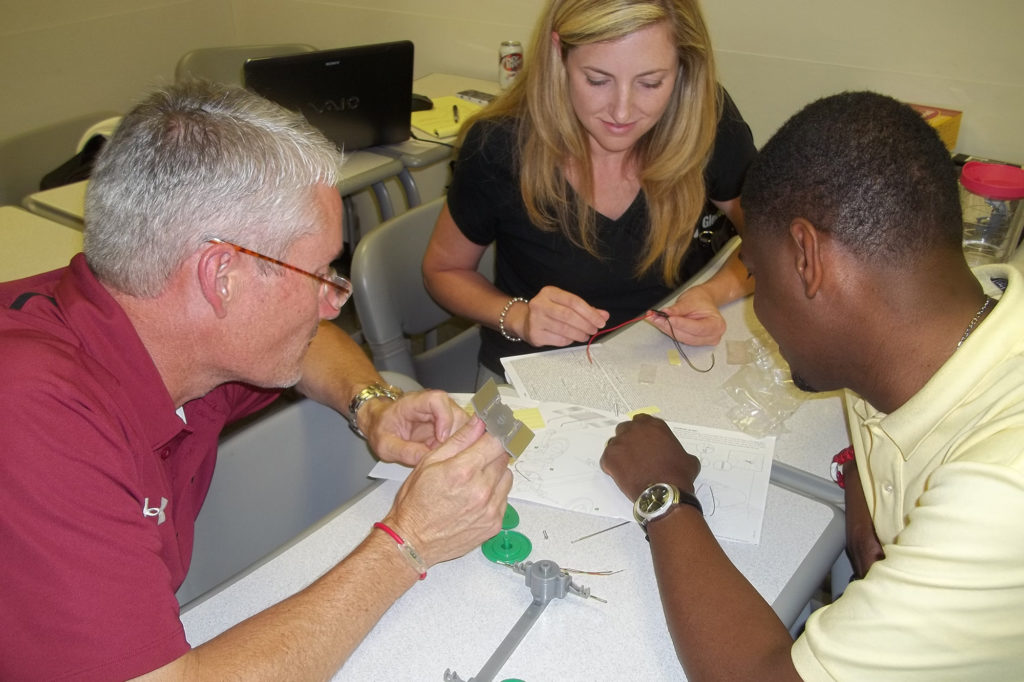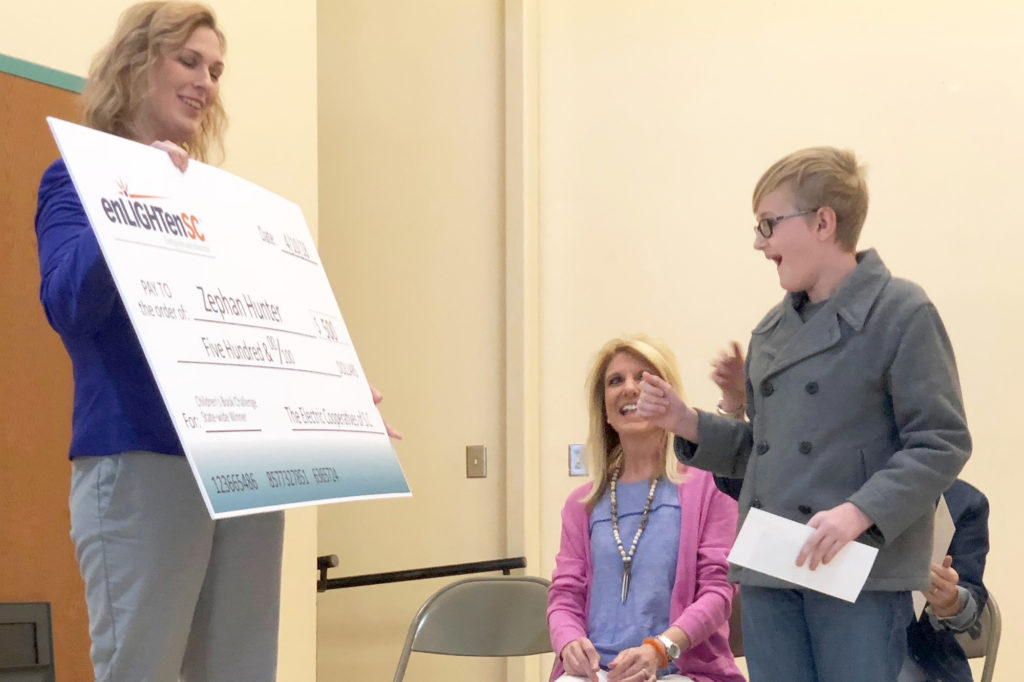
For Susan Smith, a special education teacher in Anderson, South Carolina, the energy education program developed by the state’s 26 electric cooperatives came along at just the right time.
Now in her fifth year at Robert Anderson Middle School, Smith is working on a “Master’s + 30” certificate, a credential many states offer to teachers with master’s degrees. With it, Smith will be eligible for a salary raise and can bring fresh ideas to the classroom, especially on environmental issues, a topic close to her heart.
Professional development, though, is an expensive endeavor. Teachers can pay up to $3,000 for each hour of graduate classes. “Anytime teachers can take a class at a discounted price or for free, it’s worth it,” said Smith.
So when the Anderson public school district told teachers about a free, three-hour graduate-level course offered by South Carolina co-ops in partnership with the University of South Carolina in Columbia, Smith jumped at the chance.
One of more than 100 teachers who’ve completed the course, Smith came away with new energy and lesson plans. “It was neat to meet other teachers from other districts, and we all still keep in touch.”
And teachers don’t have to wait until summer to access energy-related resources. Through the years, co-ops have added and refined EnlightenSC’s educational offerings to reach a broader range of audiences.
“EnlightenSC demonstrates the fifth cooperative principle of education, training and information in a real way by supporting our teachers and students with resources while having fun learning about energy and the work of co-ops,” said Suzanne Nagy, the head of the middle school at Heathwood Hall in Columbia and one of two educational consultants working with co-ops on EnlightenSC. Gina Varat, a science teacher at Christ Church Episcopal School in Greenville, is the other consultant.
EnlightenSC has evolved considerably since it began as a single website in 2007 as part of an initiative approved by directors of Central Electric Power Cooperative, a G&T in Columbia, to reduce energy use among residents and businesses served by member distribution co-ops.
Ron Calcaterra was the G&T’s CEO when EnlightenSC was formed. He’s marveled at how co-ops have shaped the initiative over the years. This year, for example, teachers can check out “traveling trunks” of lesson materials on co-op history and energy-related topics developed by the state’s electric co-ops.
“I really do credit our member-distribution systems for having the vision to create and continue support for a program like EnlightenSC,” said Calcaterra.
Fourth- and fifth-graders write and illustrate books on the history of electrification in the state and co-ops’ role in it, and they submit works to a “Children’s Book Challenge.”
“The benefit for us is that we’re introducing teachers to energy concepts and the cooperative way of thinking in a way they may never get otherwise,” said Lindsey Smith, vice president of education at The Electric Cooperatives of South Carolina in Cayce.

That focus is important, said Smith, because research shows that co-ops are largely a mystery to young people.
“We need to teach what a co-op is, what its benefits are, and how its model is fundamentally different,” said Smith. “Maybe someday a bright young person will get excited and work for a co-op. Or maybe get into a STEM field and solve our energy challenges.”
Back in Susan Smith’s special education classroom in Anderson, the energy portion has concluded for the year, and she’s looking forward to next fall when more students can learn about renewable energy by building and racing solar-powered cars and cooking s’mores in pizza box solar ovens.
“My kids learn differently and they’re used to being outside the norm,” Smith said. “Anything that’s cool and different is wonderful for them.”
Victoria A. Rocha is a staff writer at NRECA.